A close cousin to the more commonly seen butternut squash, delicata squash is a beige to cream colored fruit with a distinctly sweeter flavor than many other kinds of winter squash, making it a primary ingredient of choice in dishes like roasted squash or soups where its delicate texture and flavor provide an excellent experience.
However, certain circumstances or situations may require that the delicata squash be substituted with a suitable enough replacement, whether in terms of replicating its delicate texture or in a flavor capacity wherein the substitute will reproduce the same nutty sweetness found in the winter squash variant.
The best textural substitutes for the Delicata squash are sweet potatoes and butternut squash. The best flavor substitutes for the Delicata squash are honeynut squash, sugar pumpkins, and buttercup squash. The best nutritional substitutes for the Delicata squash are pumpkins, carrots, and cantaloupe.
Textural Substitutes for the Delicata Squash
As it is fittingly named, the delicata squash possesses a rather soft and tender skin alongside its succulent rind, with the physical integrity of said rind becoming even softer as it is subjected to direct heat such as during stewing or roasting.
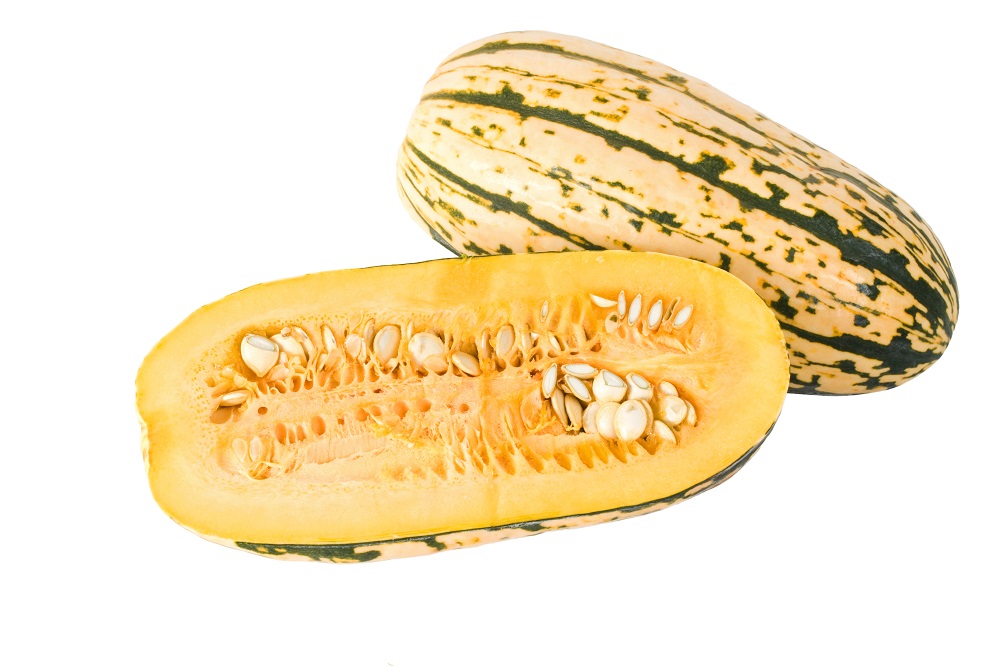
In instances where the texture of the delicata squash must be substituted in a recipe, several other types of squash or tuber vegetables may instead be used, provided that they are cooked or processed in the appropriate manner.
Sweet Potatoes
Especially a suitable choice if the reason behind the substitution of delicata squash is an individual’s intolerance or dislike of the winter squash family of fruits in general, sweet potatoes may possess a similarly tender texture, especially if subjected to the same cooking methods normally involved in the usage of delicata squash.
Sweet potatoes tend to vary from species to species, though most share the characteristic of a distinctly sweet and nutty body of flavor that is also found in delicata squash, both of which impart an intensified flavor when fried or roasted.
Butternut Squash
Somewhat more intense in terms of flavor than the delicata squash, the butternut squash is nevertheless an excellent substitute both in terms of texture and flavor, with a similarly tender flesh and sweeter flavor profile that may be cooked in practically any way that delicata squash itself would be.

A benefit to substituting delicata squash with the butternut squash is the ease at which it may be purchased, being among one of the most common types of squash found in most of the world’s continents, alongside the fact that it is rather efficient to grow, lowering its relative cost of purchase.
Flavor Substitutes for the Delicata Squash
Another hallmark of the delicata squash apart from its soft and rather tender texture is its rather sweet flavoring, undercut by a nuttiness that intensifies as the rind of the fruit is browned and cooked, a characteristic that the delicata squash shares with a variety of substitute fruits and vegetables.
As always, however, it may be rather difficult to replicate the exact flavor profile of the delicata squash in its entirety, all the more so in recipes where the delicata squash is the primary or only ingredient.
As such, it is advisable to season the delicata squash flavor substitute with seasonings or to pair it with other ingredients that may overcome or cover up this otherwise minor difference in flavor notes.
Honeynut Squash
Another variant of the winter squash, the honeynut squash is distinct in shape and appearance to the delicata squash but shares much of the same level of sweetness and nuttiness that would ordinarily be found in its cousin variant.
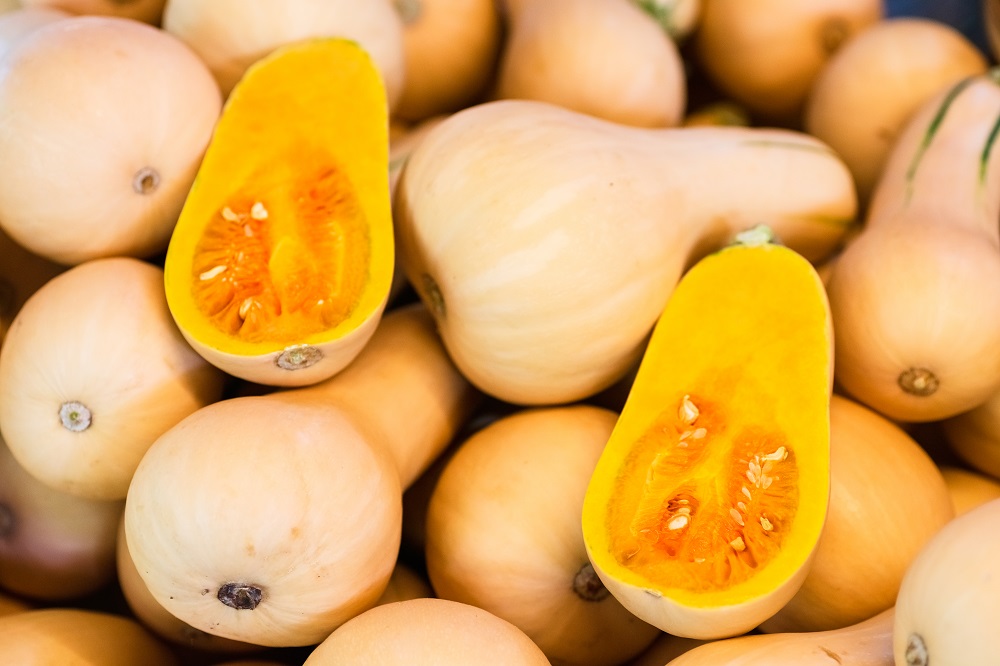
This similarity in flavor is offset by the somewhat more dense physical integrity of the honeynut squash, making it partially unsuitable in certain situations that call for a textural similarity alongside its function as a flavor substitute.
However, the honeynut squash may substitute the delicata squash quite well in such types of dishes like stews or purees, due to the fact that the subsequent processing of these cooking methods makes the textural difference otherwise unnoticeable.
Sugar Pumpkins
Visually distinct from the standard idea of a pumpkin by way of its smaller size, sugar pumpkins are fittingly named so due to their significantly more intense flavor, oftentimes being purchased for the purposes of incorporation into a pie or other form of dessert.
This characteristic sweetness may act as an excellent flavor substitute to the delicata squash, especially if the recipe intended to have its ingredients substituted with is of the dessert variety.
In comparison to ordinary pumpkins, sugar pumpkins also possess a smoother and softer inner flesh, making them similar to delicata squash in texture and consistency if roasted or otherwise cooked in the proper manner.
Buttercup Squash
A common variety of squash with a dark green skin and an otherwise yellow to orange colored flesh, buttercup squash is known for presenting a sweet and rather rich flavor that may in fact be even more intense than the sweetness found in the delicata squash itself.
Unlike the delicata squash, however, the buttercup squash’s moisture is found to be somewhat dry, with an inner flesh moderately tougher than the delicata squash.
One may not find issue with this if the cooking method intended for their dish is of the proper method, with such dishes like stews, shakes or sauces all serving to process the buttercup squash’s flesh enough to otherwise negate this textural difference.
Nutritional Substitutes for the Delicata Squash
Apart from its culinary applications, the delicata squash is also noted to be quite rich in such things like micronutrients and minerals, all of which are vital for the general health of an individual.
Certain members of the population with a particular focus on their health may, in fact, process the delicata squash in such a way that it provides an ample volume of nutritive value into their diet, making finding a substitute of similar nutritional value rather a matter of compound analysis instead of flavor or texture.
Pumpkins
Perhaps the most similar in terms of micronutrients and minerals to the delicata squash, pumpkins can in fact contain significantly higher values of iron and vitamin B than the delicata squash itself, though this advantage in nutritional value is offset by the delicata squash’s moderately higher volume of potassium, at an average of 5% per unit of volume.

However, the relatively tougher texture of most pumpkins may equate to an individual having a harder time blending or pureeing this particular substitute, requiring extra steps be taken so as to allow it to be processed in the same way as delicata squash.
Carrots
Containing a veritably significant higher volume of vitamin A per unit of volume, carrots may function in a similarly nutritive capacity to delicata squash, though their smaller size may make them a less efficient method of nutrient delivery than other, larger, fruits and vegetables.
Across the board, however, carrots are found to generally possess far more nutrients and minerals than delicata squash when comparing similar volumes of mass, with the sole caveat being an approximate 6% difference in vitamin C, with the delicata squash providing an approximate 33% of the recommended average daily value.
Cantaloupe
As opposed to the slightly lower vitamin C content found in carrots, the cantaloupe instead provides nearly four times the value of said vitamin C in comparison to the delicata squash, alongside similar levels of potassium, vitamin A and calcium.
This, however, comes with the primary drawback of the cantaloupe possessing approximately half the fiber content of the delicata squash, making it less valuable for individuals wishing to supplement their fiber intake through more organic methods than fiber capsules.
As an added bonus, the flavor and texture of the cantaloupe is generally found to mesh quite well with a variety of other ingredients normally incorporated into shakes, making it an excellent candidate for use in daily vitamin shakes.
References
1. Paris, HS (1989). “Historical Records, Origins, and Development of the Edible Cultivar Groups of Cucurbita pepo (Cucurbitaceae)”. Economic Botany. 43 (4): 423–443. doi:10.1007/bf02935916. JSTOR 4255187. S2CID 29052282.
2. Ferriol M, Picó B. (2008) Pumpkin and Winter squash. in: J Prohens, F Nuez (eds) Handbook of Plant Breeding Springer New York. pp 317-349.
3. Munro, Derek B.; Small, Ernest (1997). Vegetables of Canada. NRC Research Press. p. 179. ISBN 9780660195032
4. Brown, Sharon. 365 Yummy Winter Squash Recipes. Google Books. Independently Published 2011. Accessed December 18, 2021. https://books.google.com.ph/books/about/365_Yummy_Winter_Squash_Recipes.html?id=o2_ZzQEACAAJ&redir_esc=y

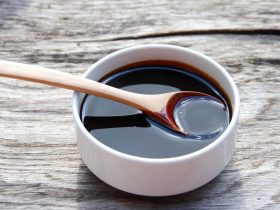
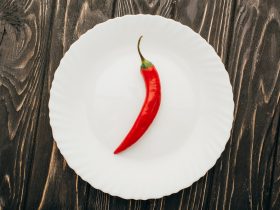
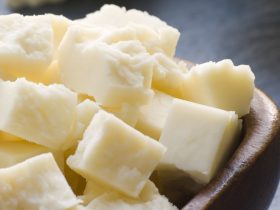
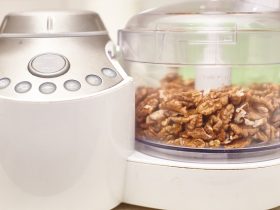
Hi, I'm Dom
Dom Eats was started to help other people fall in love with food. While cooking can feel intimidating, it doesn't have to be.